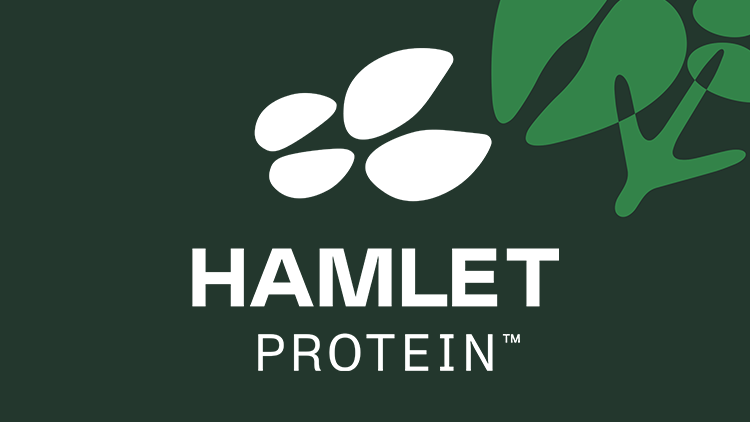Promotional Features
Choosing the optimal soy protein for young animal feed
An introduction to commercial soy products
Soy is a well-known ingredient in animal nutrition. The soybean is an excellent source of protein and other important nutrients, and every year, the production of soybean meal exceeds all other oilseed proteins put together.
Farmers and feed producers have a broad range of soy products to choose from on today’s market. Each type is produced with one goal: to improve the functional or nutritional value of the original soybean.
Nevertheless, due to differing processing methods, the content of anti-nutritional factors and digestible proteins varies widely from one soy product to another – and that influences their impact on young animal performance and gut health.
How do you know which one is the best choice for your young animal feed?
It has an impact on your young animal whether you choose full fat soy or soy protein concentrate. It is all soy, but each has very different reaction in the gut of the young animals.
When you feed young animals, you have to be extra careful. Their digestive system is not yet fully matured which means that the animal is unable to get the full benefit of the nutrients in the feed and can be harmed if fed with feed that does not suit their immature system.
But soy also contains several substances which can hinder the digestibility in the gut of the young animal, such as antigenic protein, oligosaccharides, phytic acid, lectins and trypsin inhibitors. As a whole, we refer to these as anti-nutritional factors (ANFs).
Anti-nutritional factors
Soy is the most abundantly available protein source for feed with a favorable amino acid profile. However, it also contains ANFs – materials that cannot be digested and can potentially even be harmful for animals, e.g. by forming a substrate for bacterial fermentation in the gut. Unevenness of soy ANFs therefore not only affects growth performance but also increases the risk of pathogenic bacteria. Therefore ensuring the lowest possible ANF activity in soybean ingredients is key to improving the performance, health and welfare of animals. Which ANFs exist exactly? See below for a short overview.
Trypsin inhibitors
The trypsin inhibitor activity (TIA) comes from native proteins that block the endogenous proteases; trypsin and chymotrypsin. It reduces protein digestibility and increases endogenous losses. Although TIA is reduced by heat treatment, overheating has a negative impact on protein quality. The effects of TIA are particularly strong in young animals, whereas mature animals are capable of compensation for the loss of trypsin activity by enlarging the pancreas.
Oligosaccharides
Soybeans contain approximately 6% oligosaccharides, particularly raffinose and stachyose. These molecules are based on sucrose with one and two extra galactose units. Galactooligosaccharides are indigestible but fermentable by the microflora in mammals and poultry. This fermentation is not beneficial as it causes diarrhea and lowers energy utilisation. It is reported that stachyose added to a stachyose-free diet reduced digestibility and performance of piglets and chicks.
Antigens
In total, 65-80% of the raw soybean protein is made up of ß–conglycinin and glycinin which are the main storage proteins of soybean. A subunit of ß-conglycinin causes allergic responses in the gut epithelia of animals. Glycinin causes antibody formation only by IV administration. The antigens create an allergic response in the gut and decrease digestive capacity protein.
Phytic acid
Phytic acid is a phosphorus-containing acid which chelates vital minerals such as calcium, magnesium, iron and zinc, impairing their utilisation. As it is also associated with protein, its breakdown increases protein digestibility. Phytic acid is considered to be an ANF, however, the degradation of phytate by enzyme phytase increases phosphorus availability. Therefore phytase producers are increasing the dosage to reduce the ANF of phytic acid. However, the condition in animals’ guts is not always ideal and variation in digestibility of phosphorus has been found when phytase was added, especially for young animals.
Lectins
Lectins are glycoproteins that are resistant to proteolysis. They bind to the small intestine epithelium and cause severe disruption of the brush border and villi ulceration. This increases endogenic nitrogen losses. Using lectin-free soybeans improved true metabolisable energy, protein digestibility and feed conversion by about 10%.
More than 1,000 analyses a year
In the dedicated lab at Hamlet Protein, more than 1,000 analyses a year are run to evaluate and compare commercial soy products and the processes used to produce them. In addition to chemical composition, the lab investigates the content of key ANFsand assesses their nutritional potential in young animal feed.
The combination of the analyses results with the findings of international studies and feeding trials gives a clear overview of which soy products work best and when. That’s essential knowledge for any formulator of young animal feed.
Feed Academy – videos and articles
You can find the key facts in Feed Academy - a guide to commercial soy products. For each soy product category, there is a short video and article. In the videos, nutritionist Lars Sangill Andersen will discuss how the different methods affect the content of ANFs and the digestibility of the protein in different ways. You will be guided through the advantages and challenges of the different processing methods from the young animal’s point of view.
The commercial soy products elaborated in the guide are:
- Full fat soy (FFS)
- Soybean meal (SBM)
- Extruded soybean meal (EXSBM)
- Fermented soybean meal (FSBM)
- Enzymatically treated soybean meal (ETSBM)
- Soy protein concentrate (SPC)








